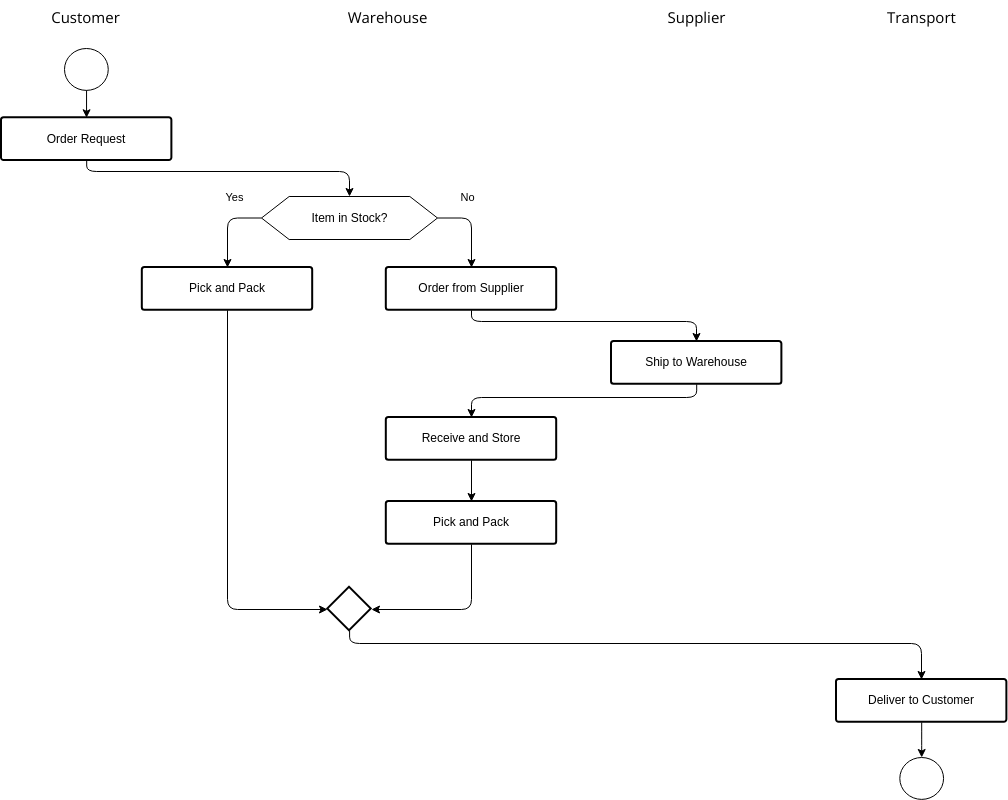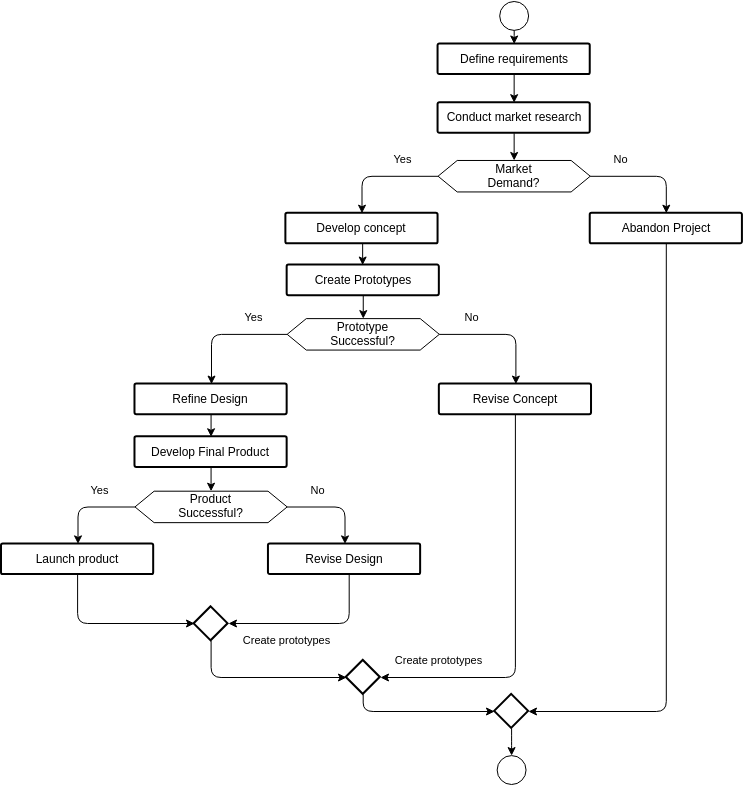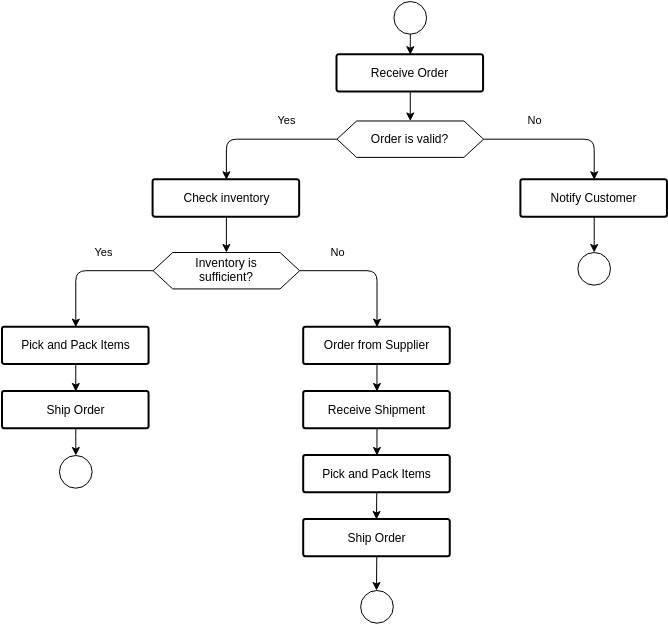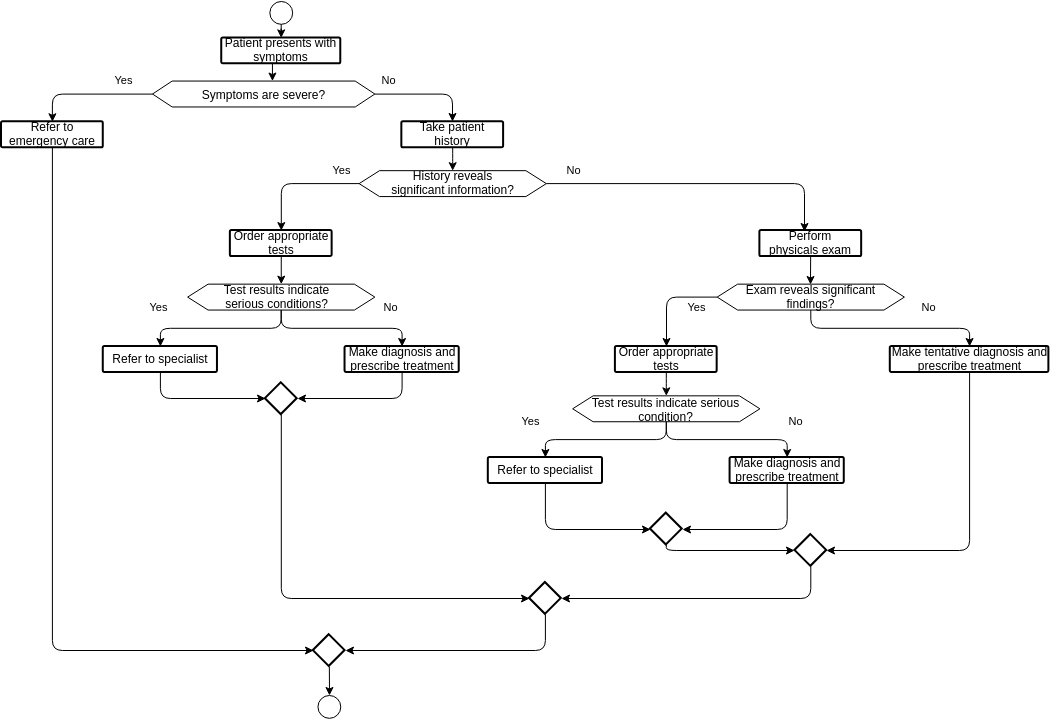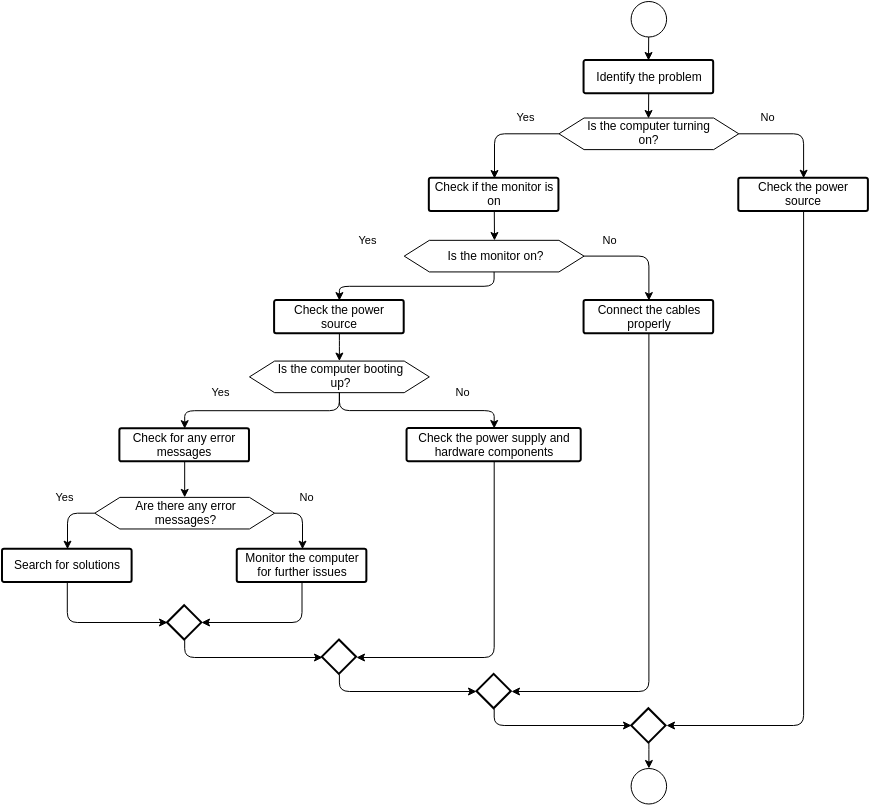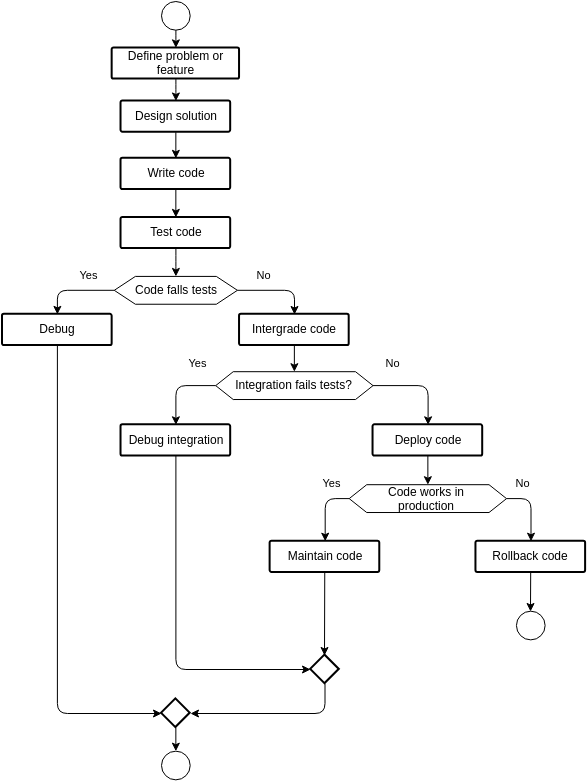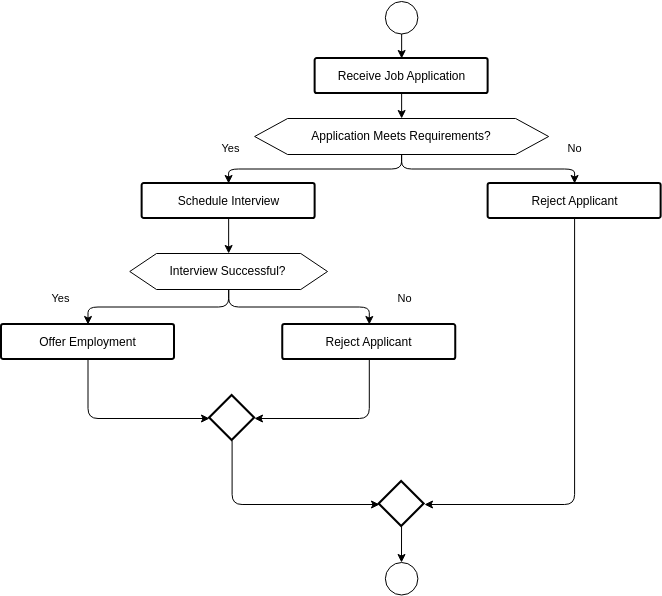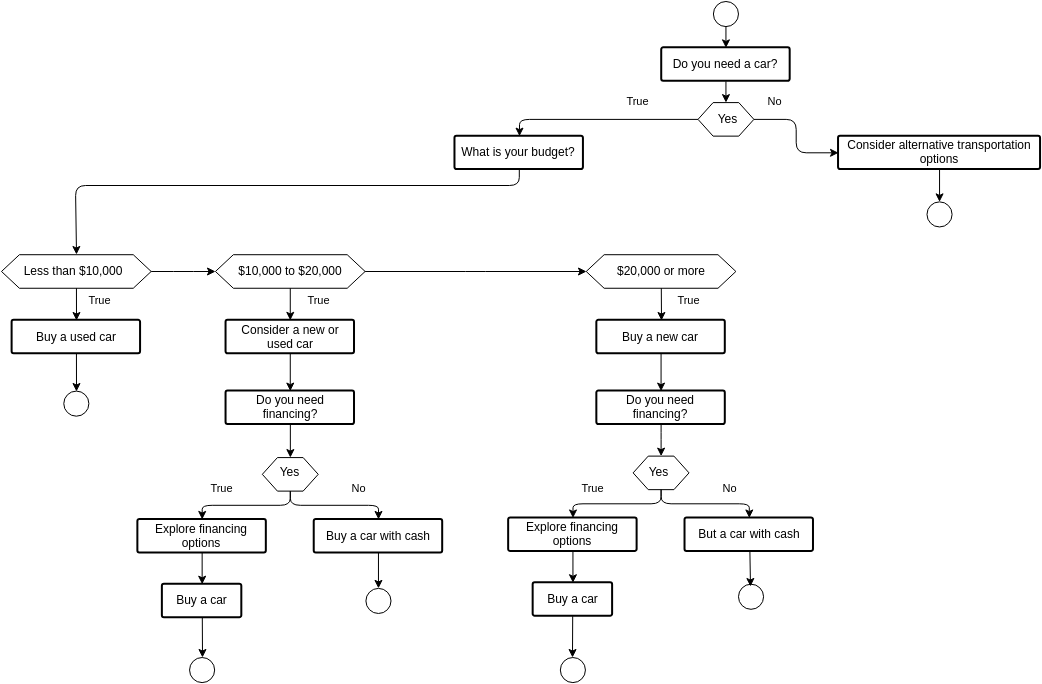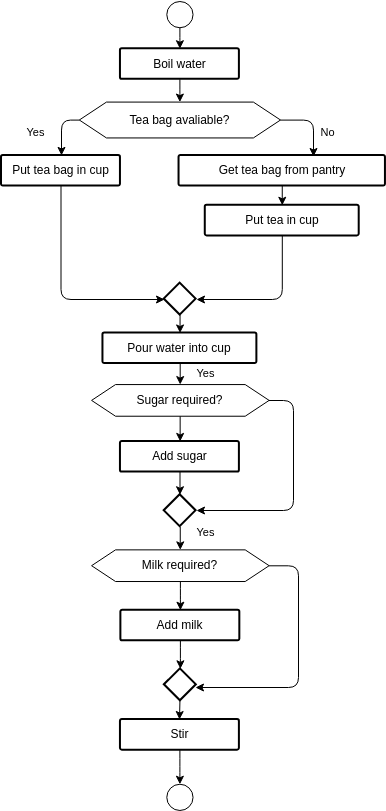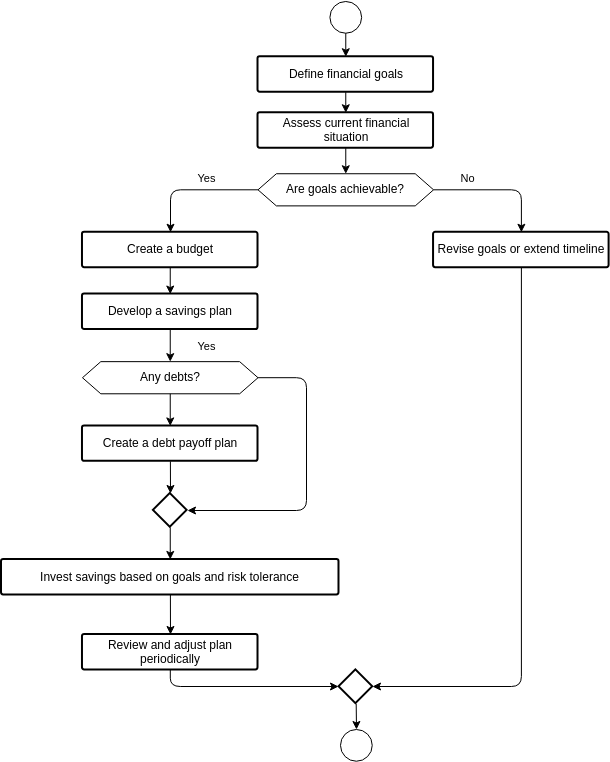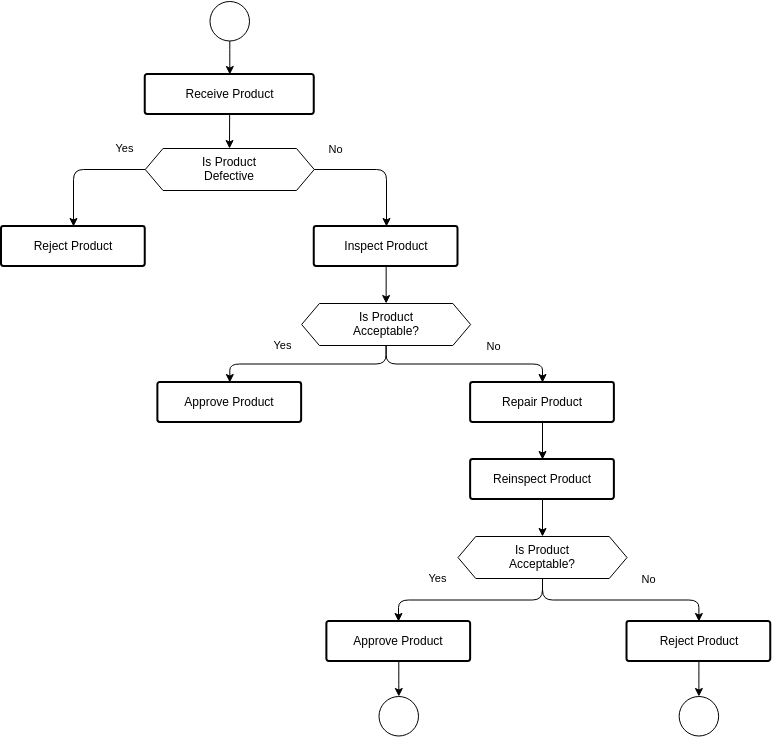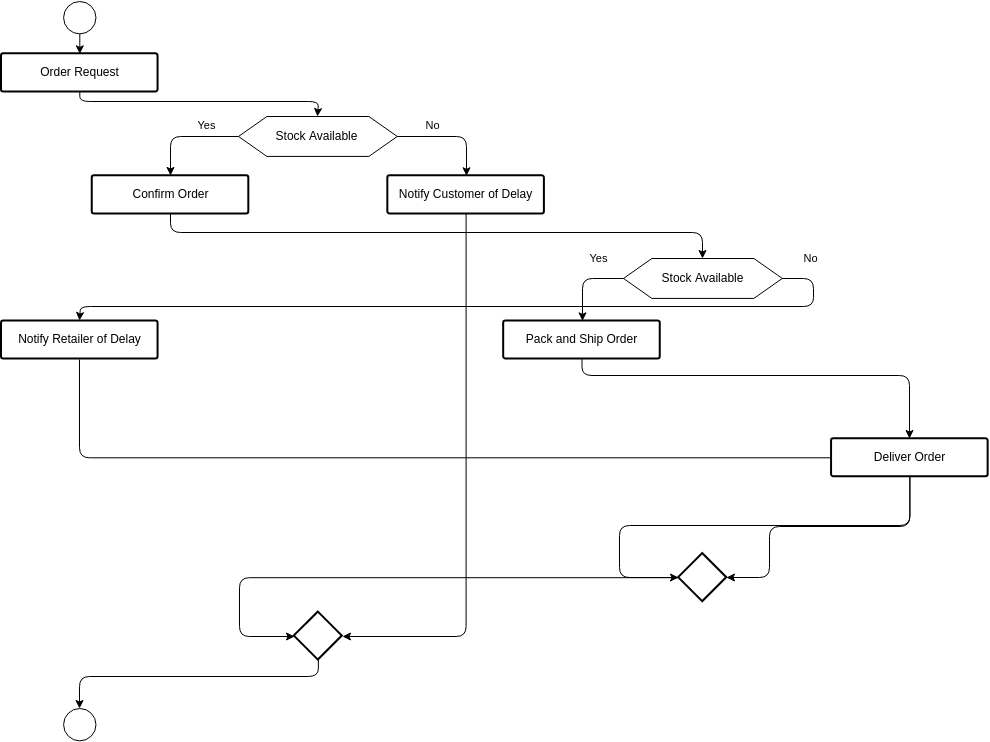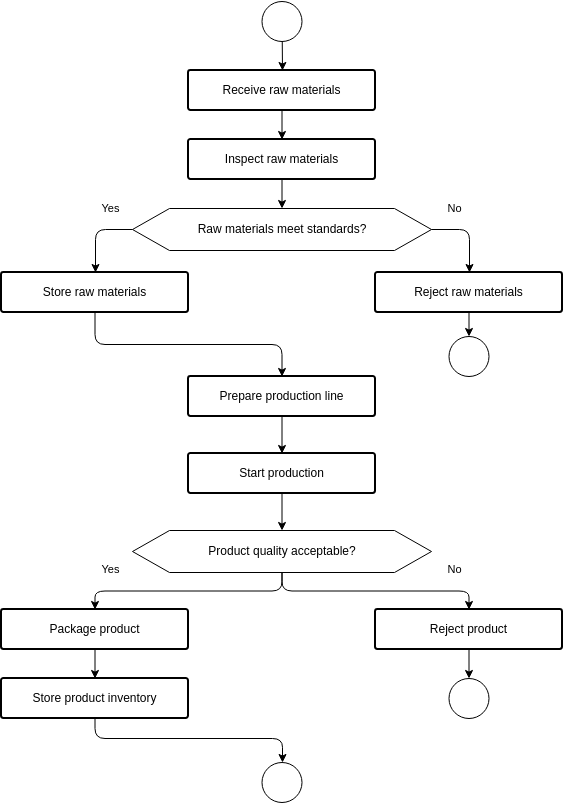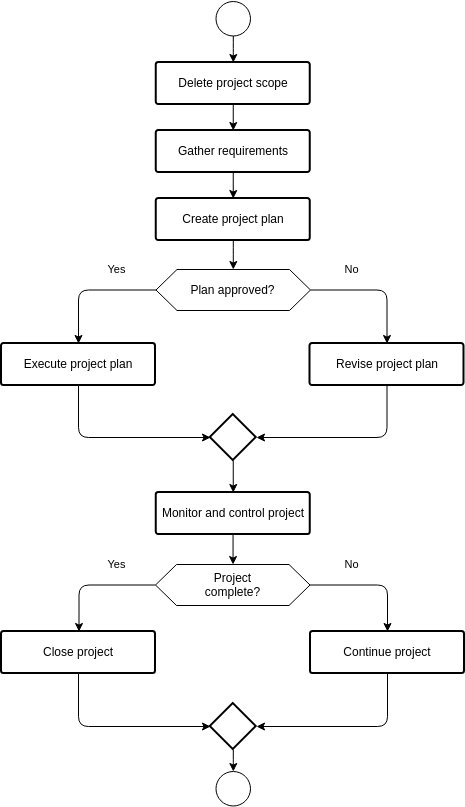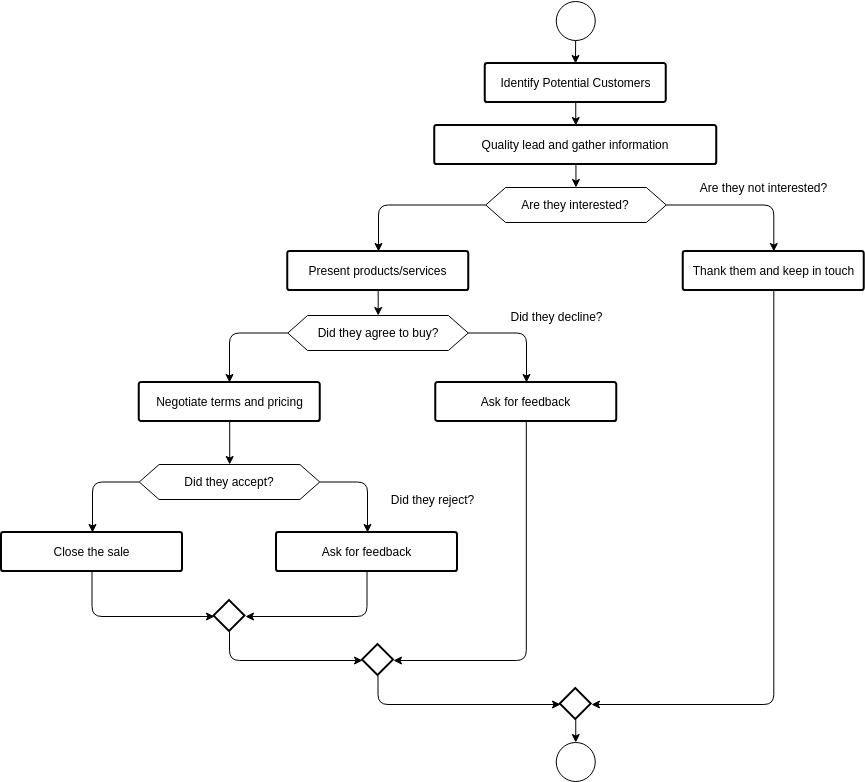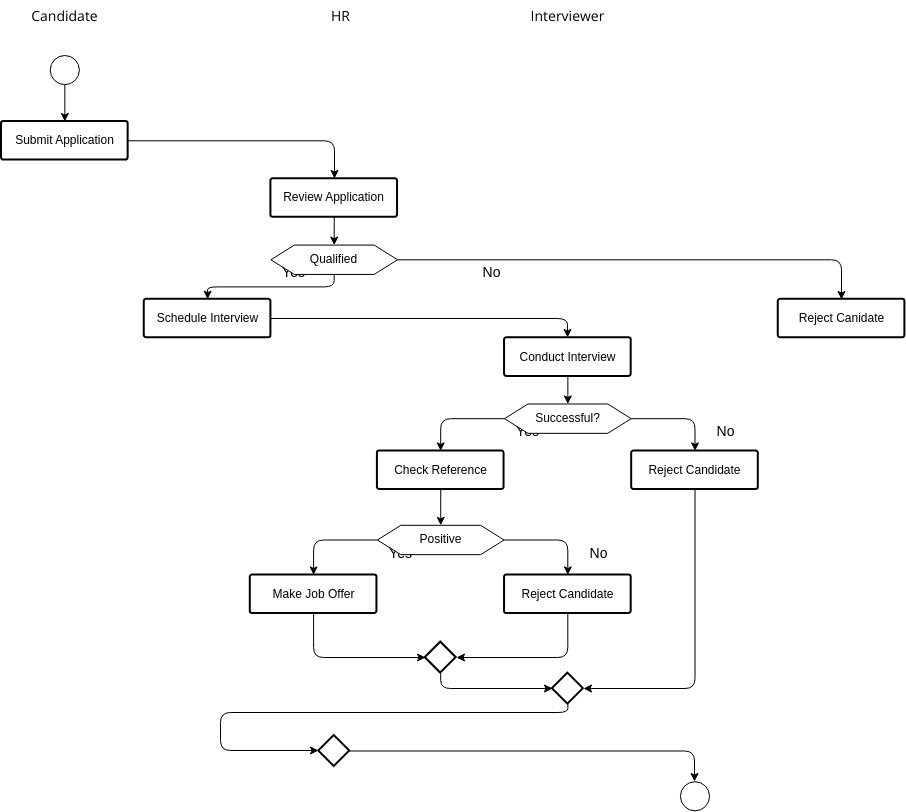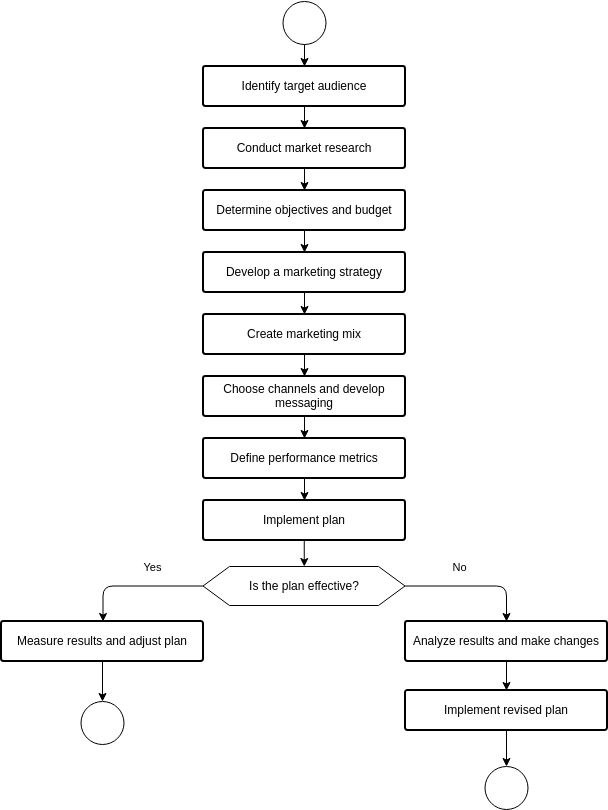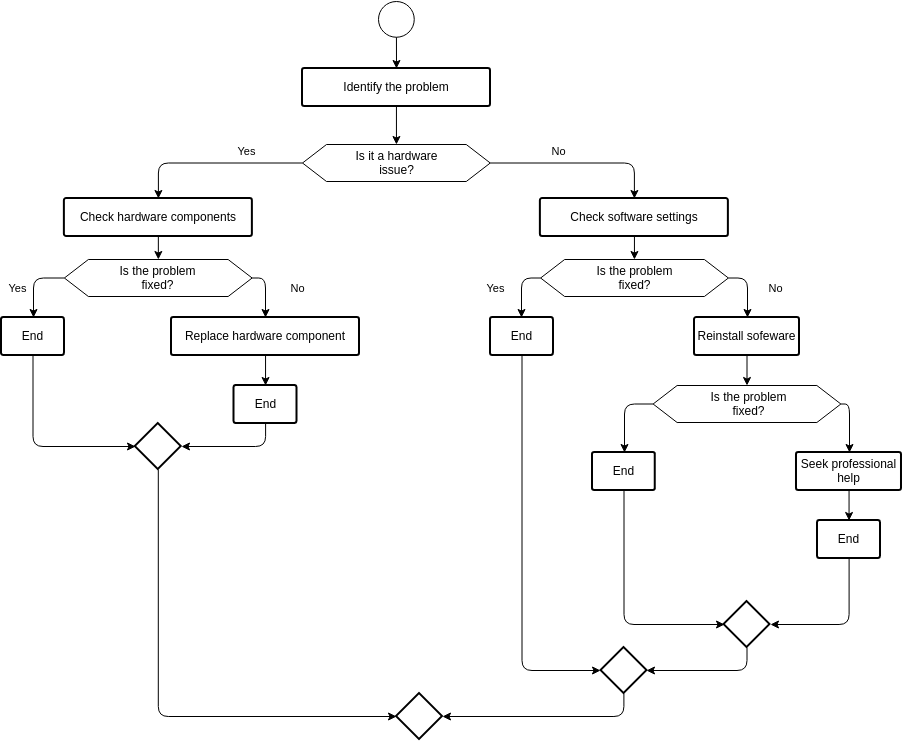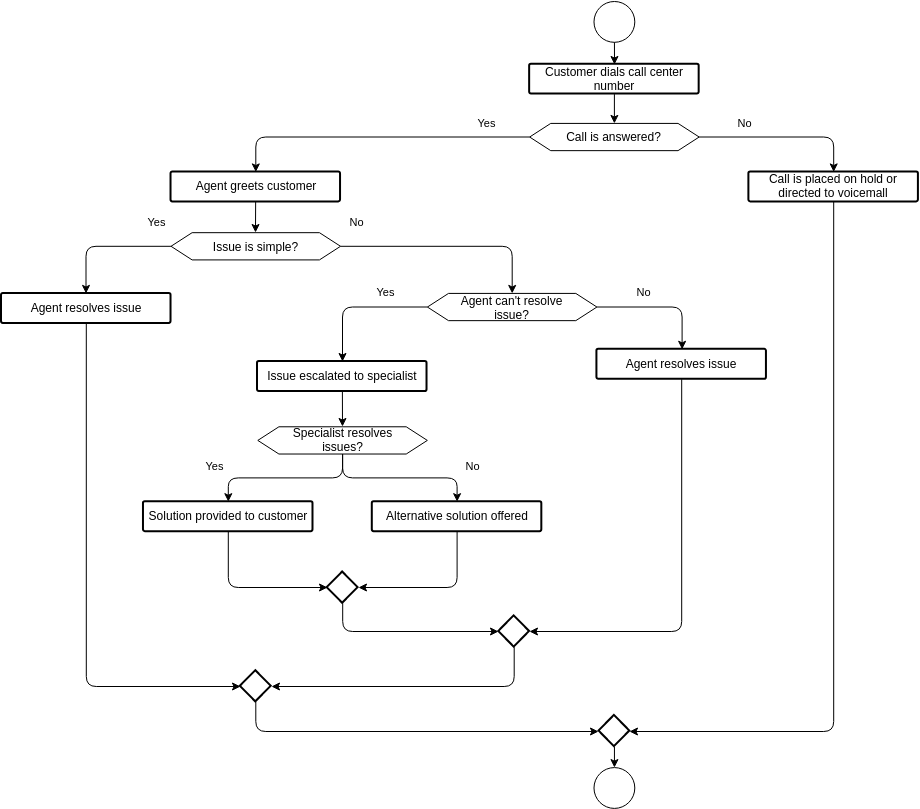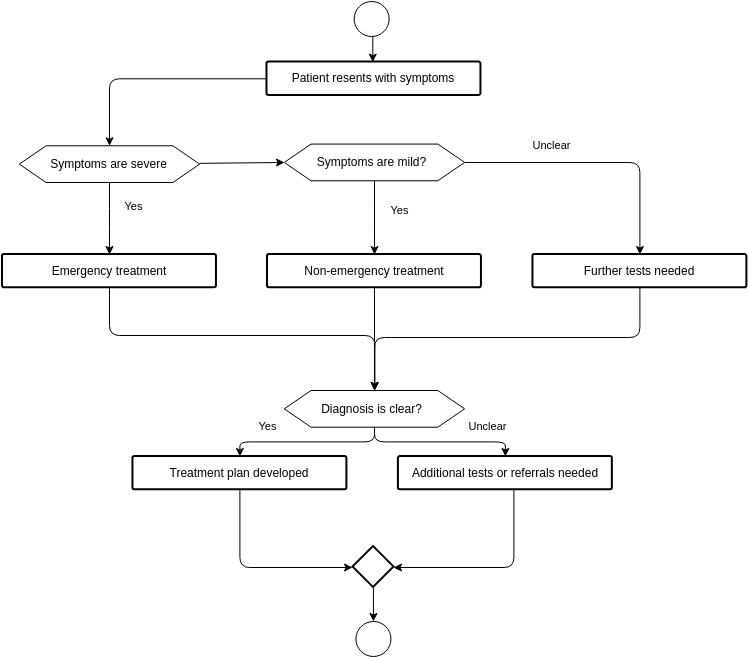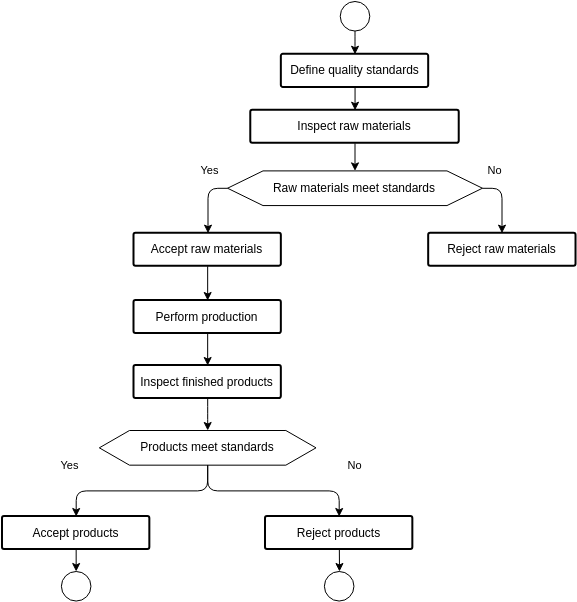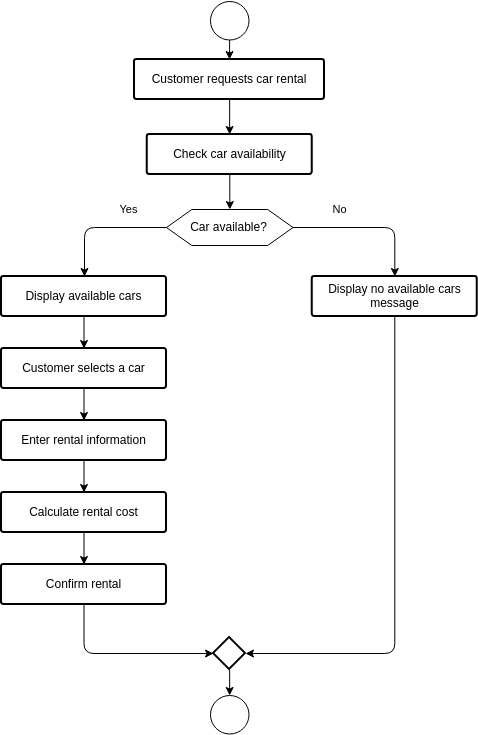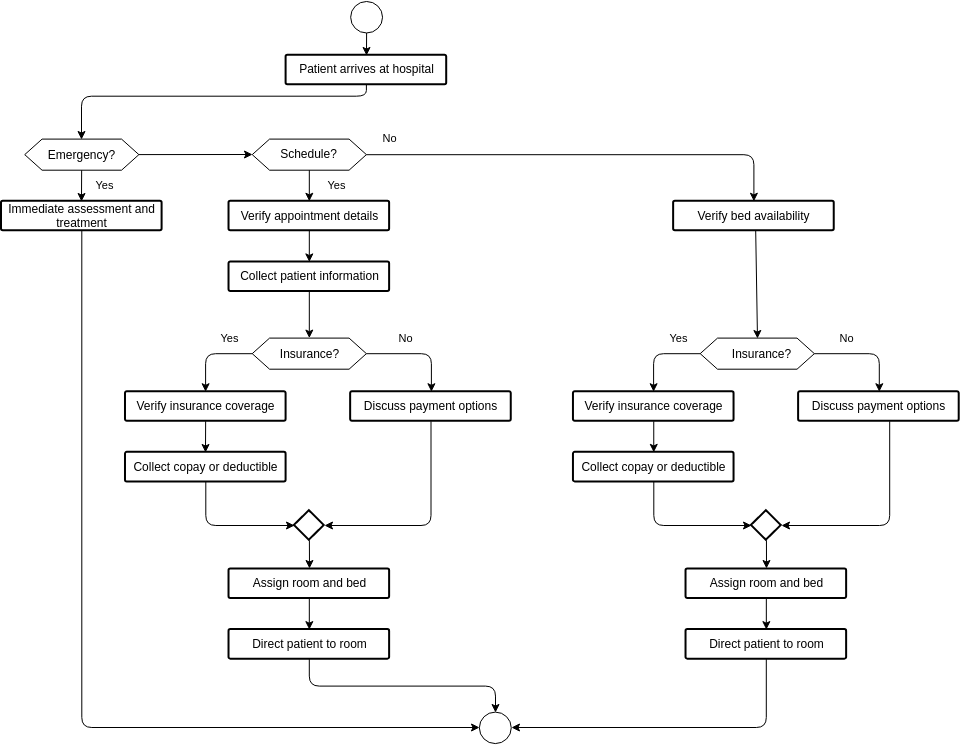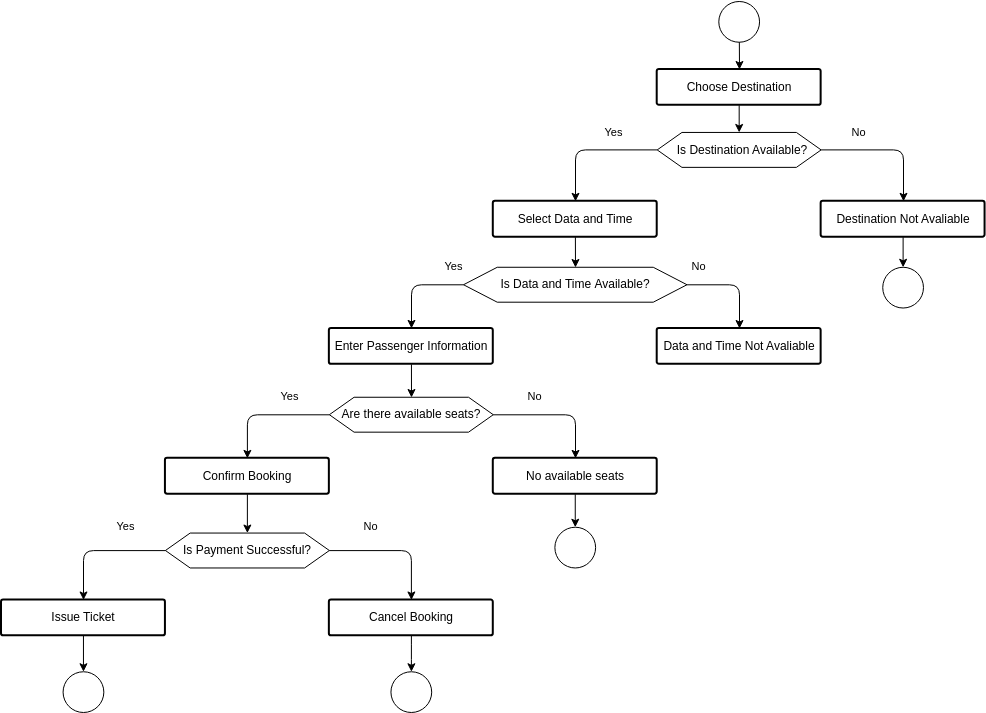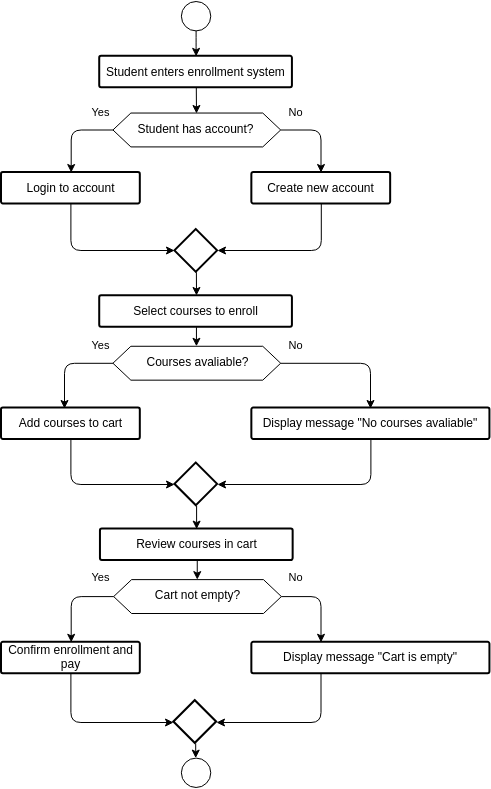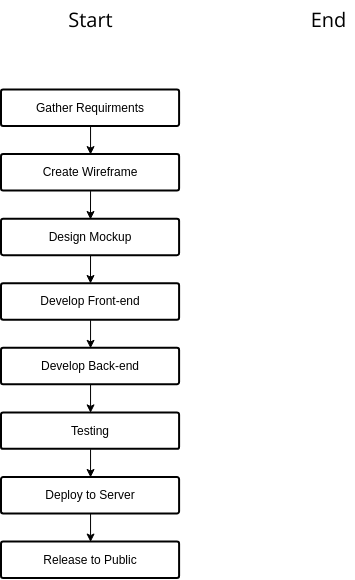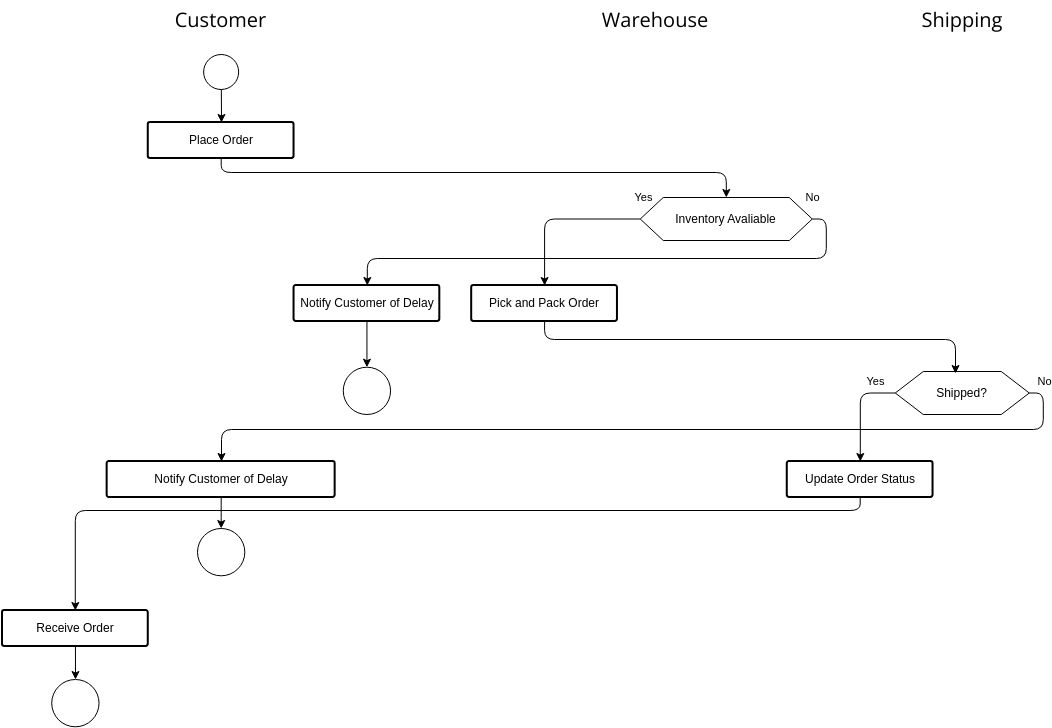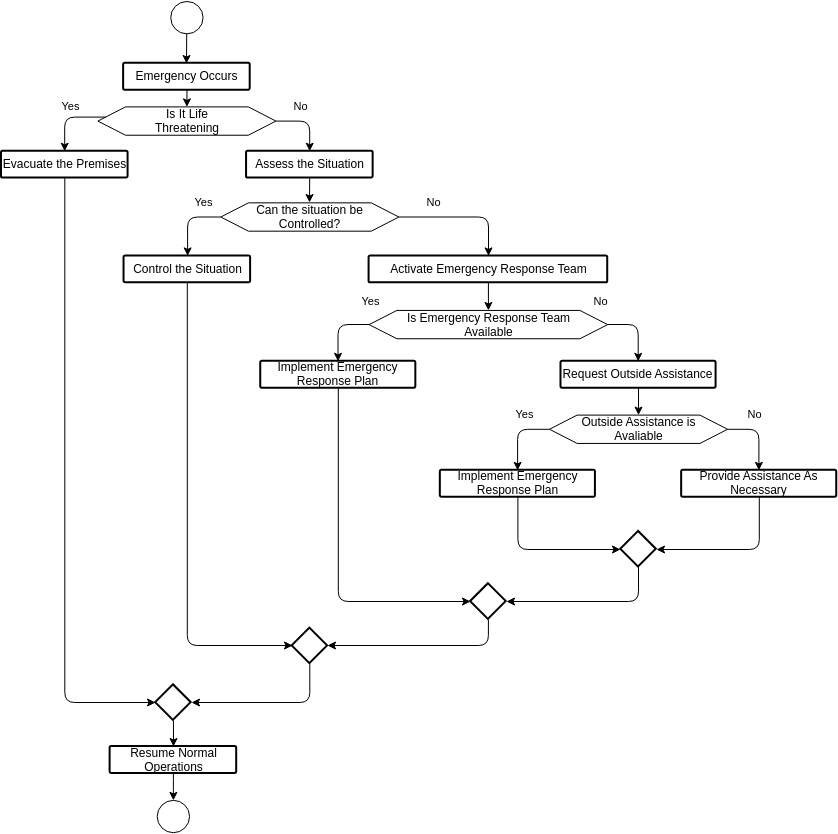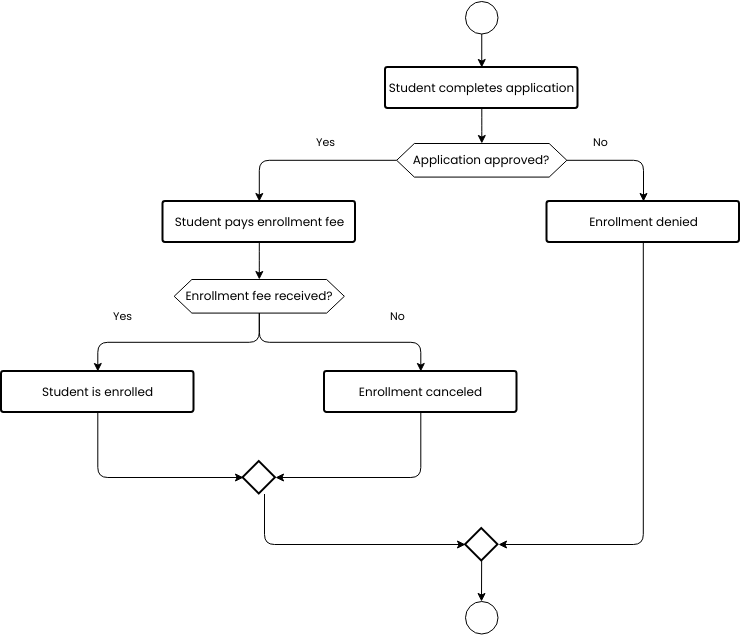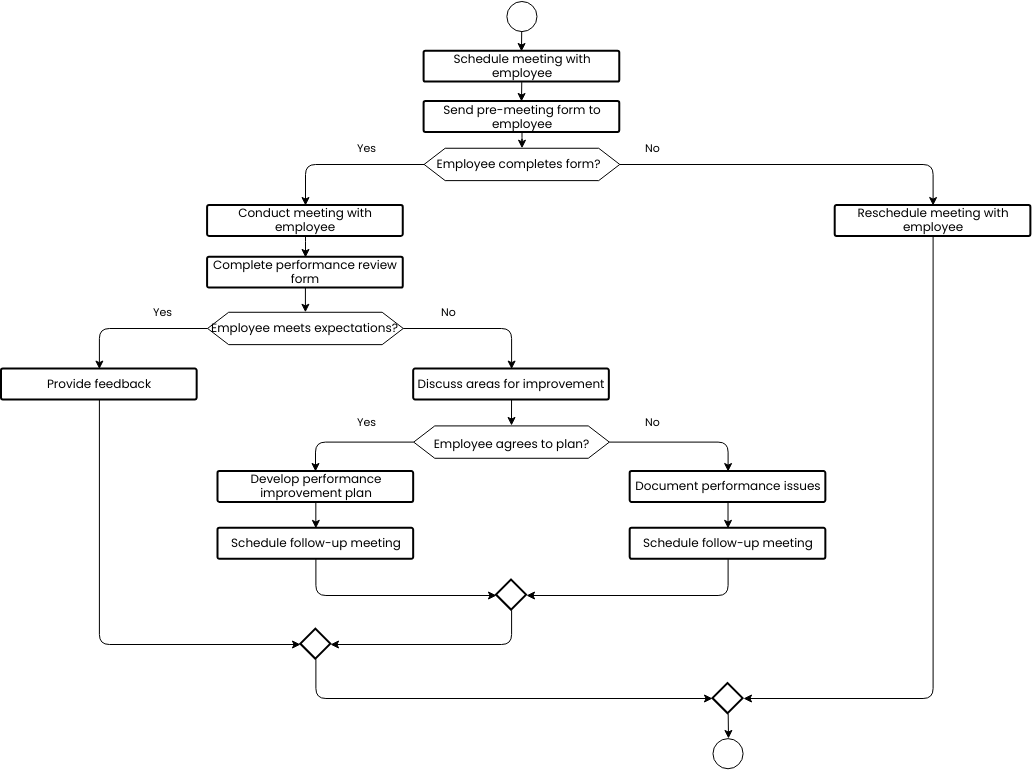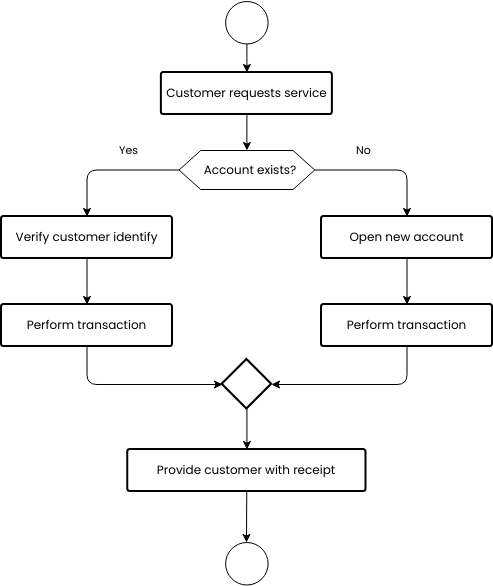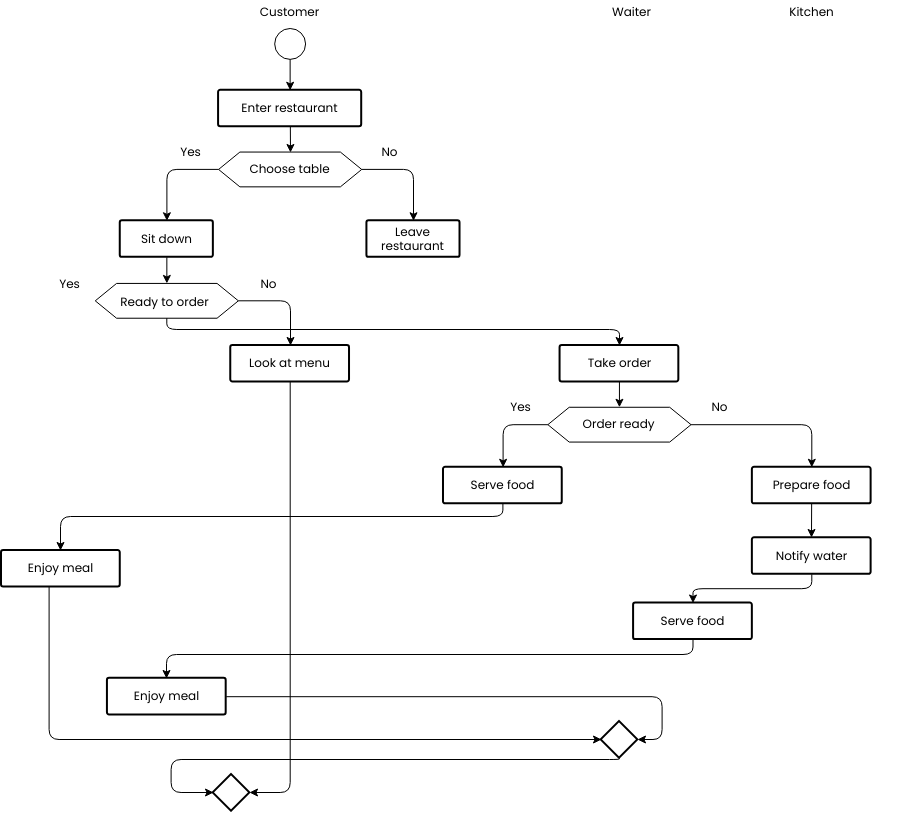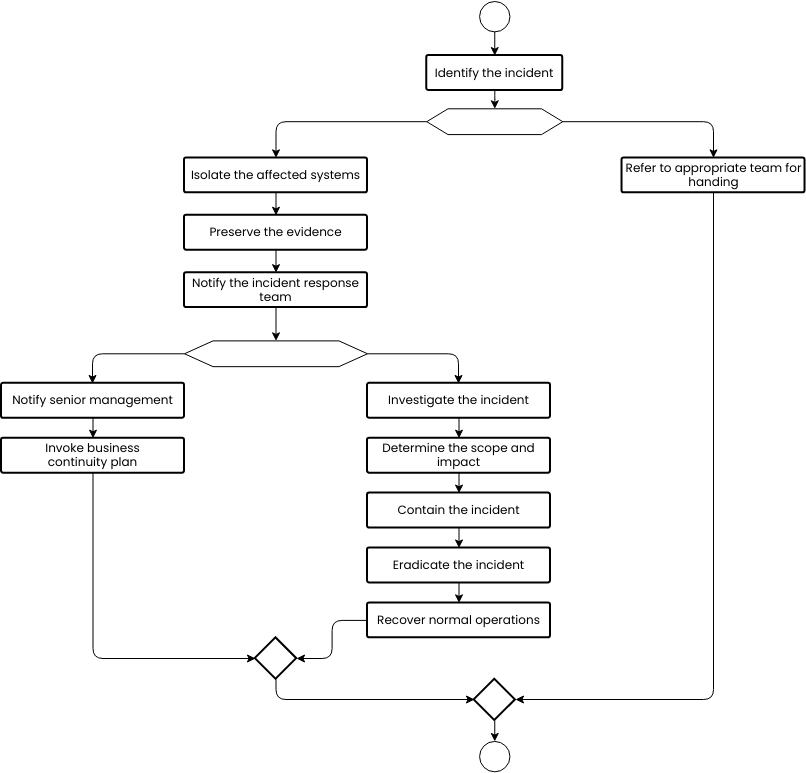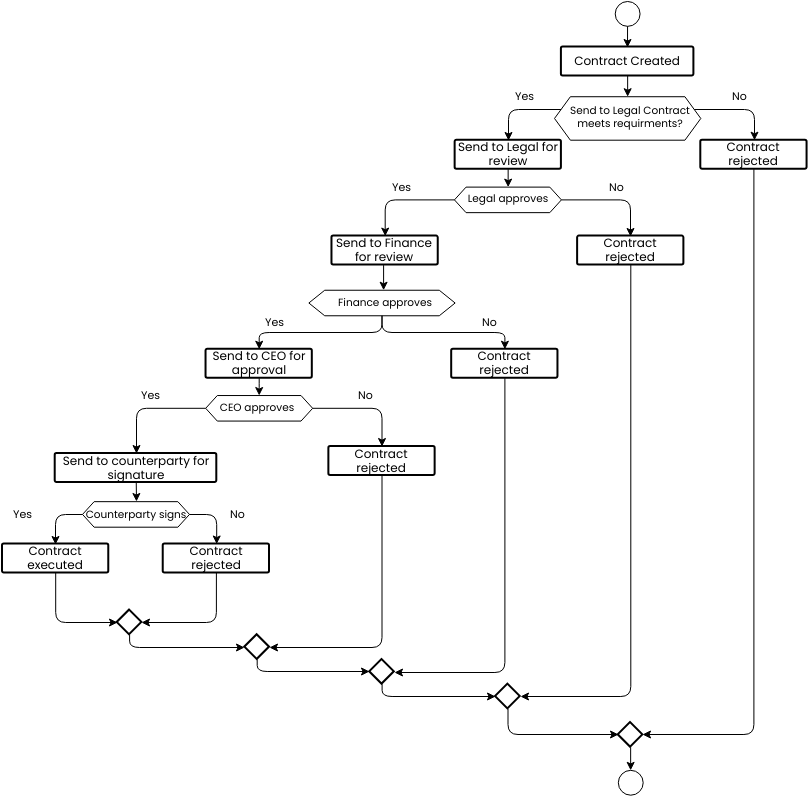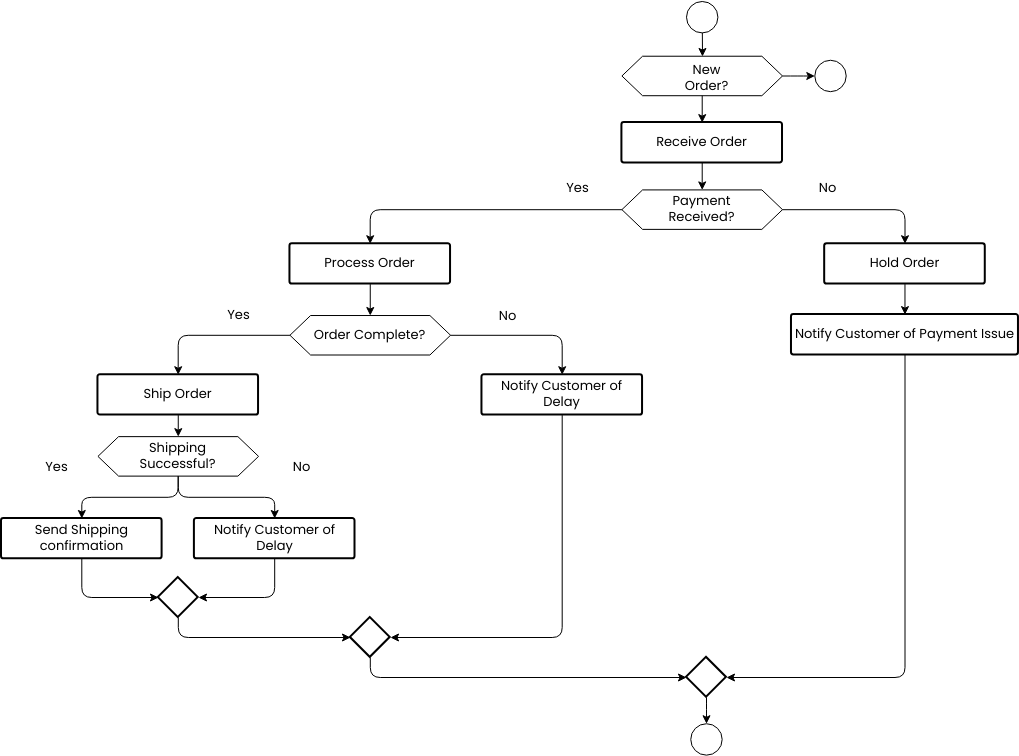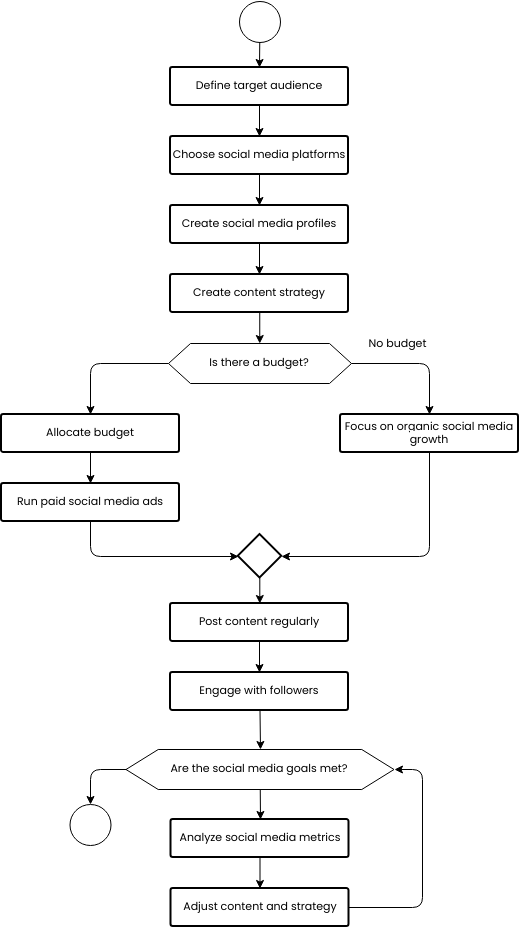The flowchart describes a supply chain process that begins with an order request, followed by placing an order with a supplier, shipping the order to a warehouse, receiving and storing the order, picking and packing the order, and finally delivering the order to the customer.
The process begins with an order request, which could come from a variety of sources such as a customer or a sales team. Once the order is received, the supplier is contacted to place the order. The supplier then ships the order to the warehouse.
Upon arrival at the warehouse, the order is received and stored until it is ready to be picked and packed. This could involve scanning the inventory into a tracking system, ensuring that the inventory is properly labeled and organized, and preparing it for shipment.
Once the order is ready to be shipped, it is picked and packed, which involves selecting the appropriate items and packaging them for shipment. This could involve using a barcoding system to ensure that each item is properly identified and tracked.
Finally, the order is delivered to the customer, which could involve using a third-party logistics provider or the company's own delivery fleet. The customer is notified of the shipment and is provided with tracking information to monitor the delivery process.
Overall, this process ensures that orders are fulfilled efficiently and effectively, with clear communication and tracking throughout the process to ensure that the order is delivered to the customer on time and in the expected condition. By following this process, organizations can improve their supply chain management and customer satisfaction.
Benefits of creating supply chain flowchart
Creating a flowchart for a supply chain process provides several benefits, including standardization, efficiency, transparency, training, and process improvement. The flowchart ensures that the supply chain process is consistent and efficient, making it easier for employees to fulfill orders. The visual representation of the process can be used as a training tool for new employees, while also helping managers identify areas for improvement. Additionally, the transparent view of the process can build trust and confidence in the organization, improving overall customer satisfaction.
Overall, creating a flowchart can help optimize supply chain management, improve operational efficiency, and reduce costs, resulting in improved customer satisfaction and loyalty.
